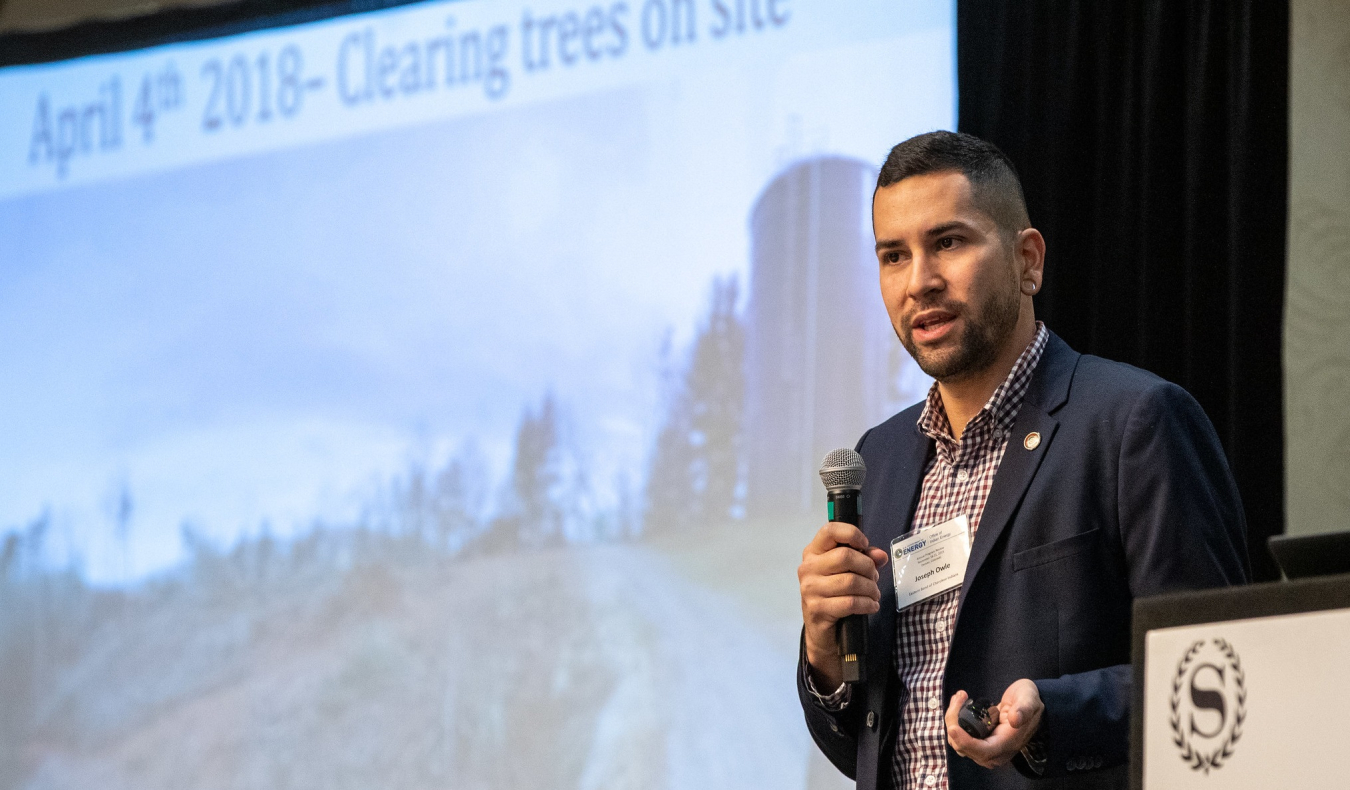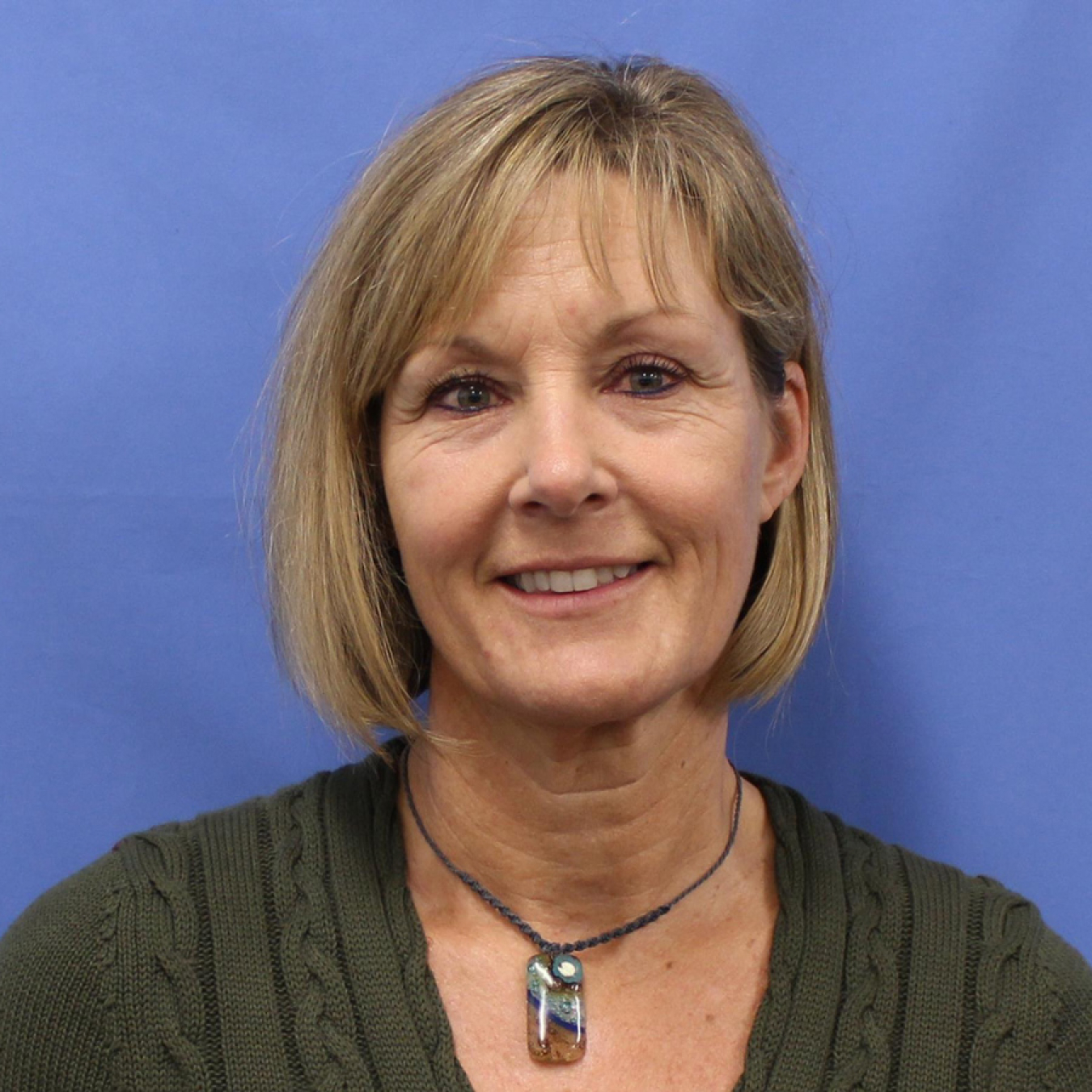Learn more about Owle's role in the 705-kilowatt solar photovoltaic system the Eastern Band of Cherokee Indians installed.
Office of Indian Energy Policy and Programs
February 19, 2020Change doesn’t happen on its own. It’s led by dedicated and passionate people who are championing innovative solutions to tribal energy challenges. Indian Energy Champions is a U.S. Department of Energy (DOE) Office of Indian Energy blog series spotlighting innovators in Indian energy.
Joey Owle recently inspired 2019 Office of Indian Energy Program Review attendees with the story of his Tribe’s successful community-scale solar project. We followed up with him to learn more about his role in the 705-kilowatt (kW) solar photovoltaic (PV) system the Eastern Band of Cherokee Indians (EBCI) installed last fall and how he aims to build on that success.
Name: Joey Owle
Affiliation: Eastern Band of Cherokee Indians, Cherokee, North Carolina
Title/Role: Secretary of Agriculture and Natural Resources

Joey Owle, of the Eastern Band of Cherokee Indians, delivers his presentation during the first day of the 2019 Office of Indian Energy Program Review.
How would you describe your role as Secretary of Agriculture and Natural Resources for the EBCI?
My role consists of a lot of meetings and emails. But it is a good thing, to an extent. I work on behalf of my staff and Chief Sneed to promote, connect, and grow the services we provide within our community and cultivate opportunities to expand the reach and impact we can have now and for future generations. When I am not in the office, I make regular rounds to all the offices where the staff who support my organization work. We talk about life, work, or whatever comes to mind. I especially like to get out with my staff in the summer to help out with various aquatic research projects—whether it’s looking for hellbender salamanders, assisting with bat-netting assessments, or hopping on a boat to go check water-monitoring equipment. We have a very unique division that gets to do a lot of fun stuff!
How do advancing your Tribe’s energy goals and promoting tribal energy development fit into your broader responsibilities?
My primary responsibility is to coordinate projects between tribal departments such as Housing and Project Management, identify funding resources, and organize all the moving pieces to carry out a successful project. Since the completion of the 705-kW solar system in spring of 2019, I have been tasked with focusing on deploying solar projects on residential, governmental, and community buildings.
What do you find most motivating or inspiring about the energy planning and development work you do?
When I think about the projects we hope to complete over the next 12 to 18 months, I think about how futuristic this type of work is.
To think that we have the technology (and it is getting more efficient every day) to capture energy from the sun and convert it into usable form is just astounding. I remember learning about solar energy as a kid and being determined to have a job in some sort of science field. Now, as an adult, I get to help make an impact for our Tribe’s resources and work to make a difference in the lives of the families in our communities by reducing the power bill.
Growing up, my parents often lived paycheck to paycheck. I know many folks are still caught in that paradigm. So if we can help cut some of their monthly energy expenses, then we are helping them save a little more, get those new shoes, or go out for a good meal when they just don’t feel like cooking at home that night.
How do you view (or how would you characterize) your Tribe’s current energy challenges and opportunities?
It is ironic to characterize it this way, but my biggest challenge is having too many opportunities. With the amount of funding available through grants coupled with the Tribe’s existing resources, we have the ability to pursue several projects at once. What I plan to work on over the next year is getting 10–25 systems deployed on residential units. Next, we will revisit a medium-term set of goals for not only deployment of renewable energy technologies but also strategic management of the resources deployed.
One specific challenge I have faced is connecting tribal leadership and the tribal membership to the right informational resources to understand what it takes to deploy a solar PV system. For example, I think many folks think that if they have a solar PV system generating power on their home, then the utility company will be paying them some kind dividend. In reality, they will be saving money each month that will then be used to pay down the cost of the system.
What is the community’s response to the project, and how has community outreach or communications played a role?
Truthfully, this project has excited tribal leadership and the community for governmental and residential deployment of solar PV systems. The 705-kW system is offsetting energy costs for one of our casinos, which in turn impacts the revenues the Tribe receives on an annual basis. We will assess the energy cost savings after one year of operations and each following year. That will generate the necessary data to demonstrate we are making a difference for a central financial operation that sustains tribal operations and programs.

The 705-kilowatt (kW) solar photovoltaic (PV) system the Eastern Band of Cherokee Indians installed last fall. Photo from the Eastern Band of Cherokee Indians
What do you consider the project’s greatest benefit to the Tribe?
With this project, we have demonstrated to tribal leadership, the community, our partners, and ourselves that we are fully capable of constructing a project of this size and maintaining it. Prior to the community-scale solar project, we only had a few small PV systems, totaling roughly 100 kW.
The success of this project has now bolstered our ambitions to do more that directly impacts Cherokee families and governmental efficiency. We are planning to continue the snowball effect of growing the total number of kW, or MW, deployed across a range of applications.
How do you see the project—and other proposed or potential milestones on the road to realizing the EBCI’s energy goals—impacting people’s lives?
Just that—we are going to focus our energy on developing a plan to bring community members into the light of opportunity for getting their own solar PV system on their home. We will work together between the pertinent tribal departments to create a process that 1) allows folks who are serious about embarking on this journey and willing to learn as much as they can about what is required to achieve a successful outcome for their families, and 2) enables our Renewable Energy program to track measurable goals.
In December 2019, a youth leadership group passed a tribal resolution aiming for very high goals, such as deploying solar on every governmental and community building, and every senior citizen’s home. I admire this ambitious outlook from those young adults who worked to get the resolution passed, and we will create a reasonable timeline for accomplishing as much of the intent of the resolution as feasibly possible.
Describe the biggest challenge and the biggest win of the solar project from your perspective?
I cannot point to one singular challenge that has been overwhelming. I am located roughly 50 miles away from the system, but with the online portal set up to monitor the system remotely, there is not a real challenge for maintaining efficient operation.
This project has communicated to our communities—and the region—that the EBCI is serious about reducing our energy consumption and pollution emitted from our operations. We have raised our own bar of expectations for future projects and the reach of impact we can have.
What have been your top takeaways or lessons learned that you think other tribes might benefit from?
Plan, plan, plan! Going through a strategic planning process is vital for seeking funding resources and carrying out a project’s intent. While I appreciate the vigor this project has generated, it is essential that we are deliberate about setting achievable goals.
What’s your vision for the future of energy in for the EBCI?
We are committed to positively impacting and improving EBCI members’ lives to become more prosperous, live a thriving life, and maintain a healthy well-being. If we can impact the wallets of Cherokee families to achieve those targets, then that is what we will do.
Learn more about the Eastern Band of Cherokee Indians’ community solar project.
Karen Petersen

Karen Petersen is a communications strategist in the National Renewable Energy Laboratory’s Communications & Public Affairs Office. With more than 25 years of private-sector experience in publishing and marketing, Ms. Petersen specializes in writing, editing, strategic communications planning, and brand development. In addition to serving as the Tribal Energy Program communications lead from 2010 through 2015, she actively supported the development of the DOE Office of Indian Energy’s communications strategy, brand identity, and outreach materials. Ms. Petersen also served as the communications lead for DOE-led clean energy initiatives in Hawaii and the U.S. Virgin Islands.

